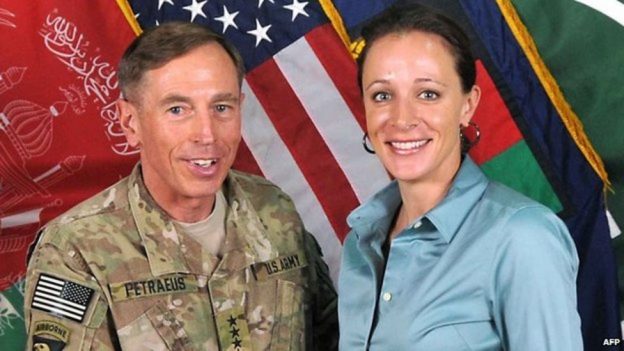September the 11th wore on, patience with the testimonies of Gen. David Petraeus and Ambassador Ryan Crocker wore thin. Petraeus presented a mélange of statistics meant to demonstrate that a surge-related reduction in violence in Iraq had occurred, and that political progress at the provincial level was in progress. On the same day, 79 Iraqis were murdered and 38 were wounded.
By the end of the previous day’s hearings, seven American soldiers lay dead and 11 had been injured in Baghdad. In what was not “an exceptionally violent day by the standards of Iraq,” reported the Independent, “a suicide bomb killed 10 and wounded scores near Mosul while 10 bodies were found in Baghdad. Three policemen were killed in clashes in Mosul, and a car bomb outside a hospital in the capital had exploded, killing two and wounding six.”
Much less upbeat than Petraeus and Crocker have been the National Intelligence Estimate, the Independent Commission on the Security Forces of Iraq, and the Government Accountability Office. Their pessimistic stock taking of the situation in Iraq was seconded by the Associated Press and the Iraq Body Count, and collated by TPMmuckraker.com.
Accordingly, with the exception of the months May and June, “2007 remains more deadly for Iraqis. In neither count did Iraq experience fewer than 1000 civilian casualties each month in 2007.” The Interior Ministry in Baghdad told columnist Patrick Cockburn that 1,011 people died violently in Iraq in August. “[B]ut an official at the ministry revealed to the US news agency McClatchy that the true figure is 2,890.”
Why even the Heritage Foundation’s assessment suggests that the surge’s claim to success is more serendipity than science. Writes Kirk A. Johnson: “Sectarian casualties are only a fraction of total civilian casualties, and such numbers lack meaning in ethnically or religiously homogeneous communities.” All in all, Coalition Forces “understate total civilian casualties,” because they generally respond to “major security incidents,” and “tend to miss smaller incidents.”
Nevertheless, some progress has been made: The Bush Administration hasn’t always counted civilian casualties in Iraq. In 2003, the Pentagon, assisted by the sainted Colin Powell, succinctly summed up its policy with respect to Iraqi “collateral damage”: “the department ‘has no plans’ to determine the total civilian casualty toll!” Going from discounting Iraqi civilian casualties to miscounting them must surely be counted as progress.
Iraqis are not feeling the upward “cumulative trajectory of political, economic and diplomatic developments,” to quote Crocker. A survey for the BBC, ABC News and Japan’s Television NHK indicates that “70 percent of Iraqis believe security has deteriorated in the area covered by the US military ‘surge.’ [N]early 60 percent see attacks on US-led forces as justified.” “While 88 percent of Sunnis say things are going badly in their lives, 54 percent of Shia think they are going well.”
No wonder the Shia are more chipper than the Sunni. Reduction is sectarian strife in Baghdad, previously a mixed area, is partly because Shiite death squads, often operating within the Maliki government, have expelled most Sunnis from Baghdad. According to the news agency McClatchy, the capital, once 65 percent Sunni, is now 75 percent Shiite.
The surge’s success is a function of brute force and barriers. Baghdad has been partitioned “by sectarian hatred and fear; by concrete walls and barbed wire.” Says Oxfam: “more than two million people are now internally displaced within Iraq, as savage new lines are drawn between communities who were not at war before.” That an additional 2.2 million refugees have fled Iraq may also help explain the alleged salutary effects of the surge: With up to 20,000 of the ungrateful beneficiaries of the surge fleeing weekly to Syria and Jordan, there are fewer victims to prey upon.
Moribund too is the political process. Sunni parties have withdrawn from the government, now dominated by Shiites and Kurds. Prime Minister Nouri Maliki has yet to repeal a law barring Sunnis from office. But even if Maliki were to comply with this benchmark, observes war correspondent Michael Ware, “there’s no Sunni who’s going to be able to go and work for a ministry controlled by the Badr militia or by the Jaish al Mahdi militia, like the Ministry of Interior or the Ministry of Health.” Sunnis will not survive there for long.
True, in the much touted al Anbar province, Sunni tribesmen have turned against al-Qaida, and are working with the US. But the Sunnis of al Anbar—an ethnically and religiously homogenous region—are also mortal enemies of the Maliki government. They consider the PM a minion of Tehran. For its part, the Maliki government views Anbaris as terrorists to be crushed. In al Anbar, the US is essentially bolstering Sunni militia to both combat al-Qaida and countervail the Iranian-influenced central government. In the words of the intrepid Ware, “these are anti-government forces that America is supporting against the government it created.” It’s a desperate and dangerous strategy, at best.
The futility of establishing the rule of law in a place which has no tradition of it, notwithstanding, even if some color is given to the claim that the surge is “working,” it has to be clear that force is a limited weapon against a cause with unlimited recruits. It can cut back the number of insurgents by killing lots, it cannot eliminate the causes fueling the insurgency—these are, predominantly, the religious animus between Shia and Sunni that dates back to AD 680, and the American occupation. Brute force will temporarily curtail the first, but will only inflame the reaction to the last.
© 2007 By Ilana Mercer
September 14
CATEGORIES: Al-Qaida, Foreign Policy, Iraq, Islam, Middle East

 print
print